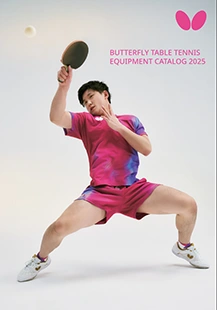Receiving Hidden Serves
by Han Xiao
Today’s topic comes courtesy of Larry Hodges, who is a coach at the Maryland Table Tennis Center. Larry has been talking to me a great deal lately about the huge problem of many high level players serving almost exclusively illegally in competition without umpires willing to fault them on their serves. While the problem has not been solved yet, it is important to understand how to deal with hidden serves adequately so that you do not lose the match purely due to an inability to return serve. Let’s go through some quick tips to deal with hidden serves more effectively.
- Adjust your positioning if possible to see the serve better.
This is more useful in a matchup between lefties and righties because it is extremely easy for a lefty to hide a serve from a righty and vice versa. By taking yourself out of the backhand corner where you might normally receive and standing closer to the middle of the table, you can see a little bit more of the service contact. This will not work 100% of the time, but sometimes you can give yourself a much better view simply by adjusting your position. Learning to return serve with the backhand from the middle of the table or even some balls short to the forehand can also assist with this if you have a strong backhand receive, especially a backhand banana flip.
- Watch the trajectory and the bounce of the ball rather than trying to judge only the racket angle.
Hidden serves can be very deceptive because it is hard to tell what angle the racket contacted the ball at as well as the timing of the contact. The opponent can make multiple fake motions during the overall service motion to throw you off. Therefore, watch the trajectory of the ball very closely rather than only trying to judge the serve using the opponent’s motion. A ball that floats, especially after the first bounce, and then drops after the second bounce is most likely heavy backspin. A ball that skips forward after both bounces is heavy topspin. A ball that is in between, bouncing fairly normally on both bounces and maybe sitting up a little bit, is most likely a light spin or nospin ball. Heavy sidespin can sometimes mask an otherwise obvious trajectory and make it more difficult to read other spins on the ball, so this takes some experience and trial and error to master.
- Stand close to the table and keep a low center of mass to watch the ball.
Standing very close to the table and keeping your weight very low will allow you to really focus in on the ball. In some cases, if the serve is too slow, you can even see the label of the ball and how it is either spinning or not spinning very quickly at all, allowing you to judge the spin on the ball. Standing closer to the table will allow you to get in on short serves quickly and keep your balance while receiving. Also, standing close to the table will allow you to judge half long serves very easily and attack these serves, forcing your opponent to serve shorter and ultimately making their serve less effective. One skill you will need to learn to make this effective is how to quickly react to fast, deep serves. This involves quickly taking a half step away from the table in order to attack the serve appropriately.
- Take the serve later to control the ball and return safely.
Contacting the ball early on the serve return usually gives the opponent less time to react. However, if you are not sure what spin is on the ball, contacting the ball later gives you more time to watch the ball trajectory and try to approximate the spin on the ball and also allows you a little better control on the serve return. In addition, give yourself a little margin on the serve return and return safely if you’re not sure of the spin. If you’ve decided to backhand banana flip, try to loop the ball safely over the net and mostly spin upwards rather than driving the ball forwards. Adjust for what you think the spin may be. If you think the serve is heavy backspin, don’t try to flip at all and push the ball deep. Try not to drop shot if you’re not somewhat sure of the spin. Not only is it very difficult to drop shot when taking the ball late, but a popped up drop shot is much more damaging to the rest of the point than a slightly higher half long or deep push since the opponent will be attacking from close to the net, giving you very little time to react.
- Practice your first block or defense a lot.
This doesn’t have much to do directly with the serve return, but is an overall skill that will make you much more confident when returning serve, especially when you cannot read the spin perfectly. Learning to block, fish, or chop the first strong attack when you are in a disadvantageous position is key to becoming more confident against hidden as well as very deceptive serves. Once you master this, you can return serves very safely when you are unsure and still keep yourself in the point, raising your confidence and lowering the opponent’s confidence.
Overall, returning hidden serves can be very frustrating if you don’t have a strategy to do so. However, there are multiple ways you can try to reduce the effectiveness of the opponent’s hidden serves, ultimately giving them fewer free points and keeping yourself in the rally more often. Combined with an effective service game of your own, preferably without serving illegally, you can give yourself the edge over most competitors.
























